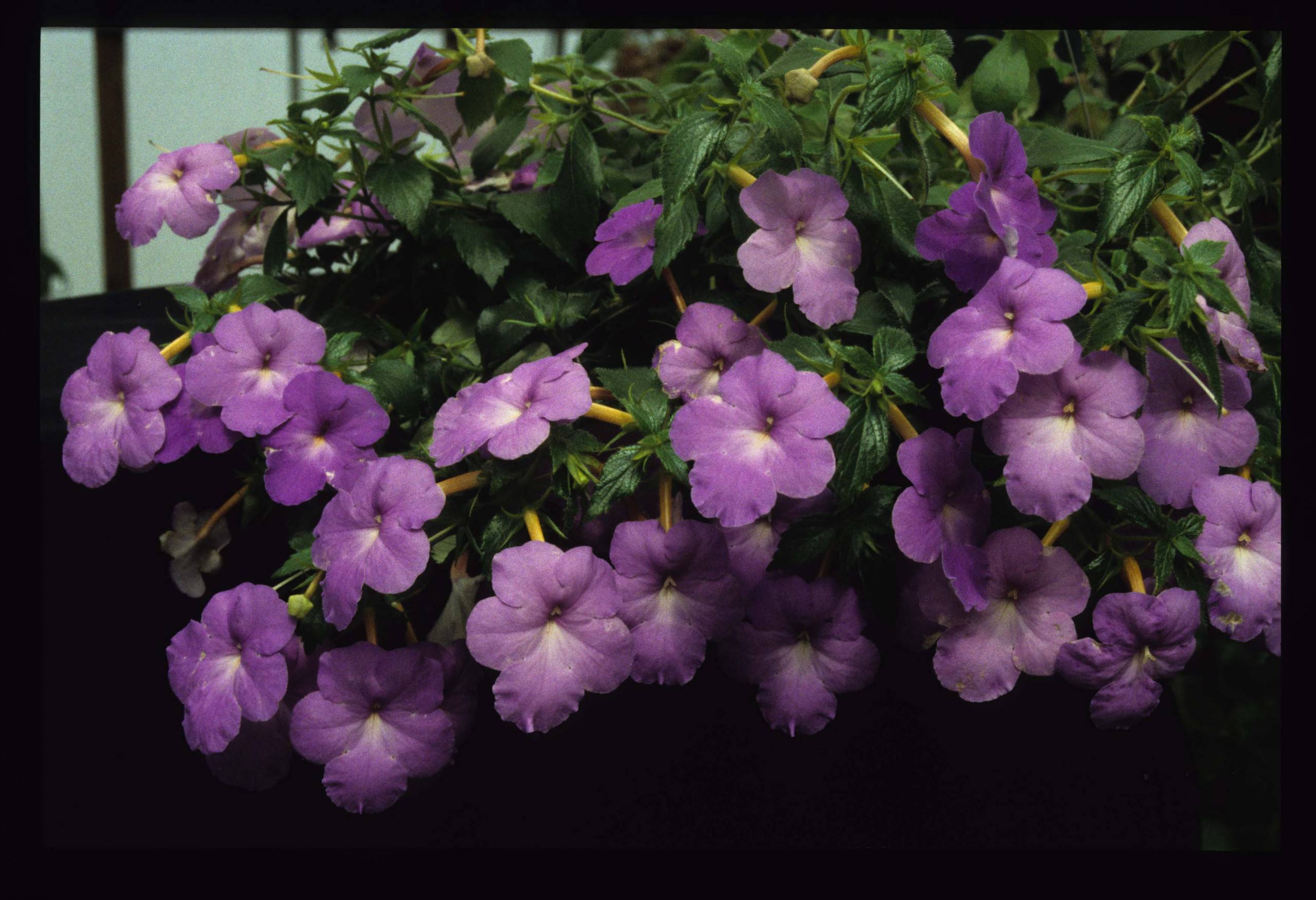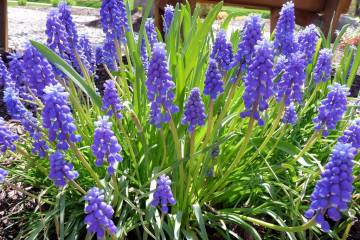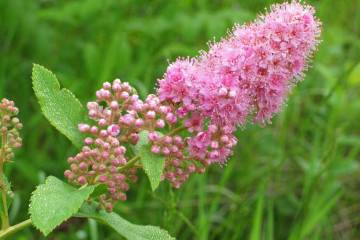Achimenesa home flowers - care and cultivation
Content:
Akhimenes belongs to the Genseriev family and is a bright plant. Many growers love to grow it at home. Due to its compact size, the bush is perfect for decorating balconies, loggias and rooms. Lush and bright buds become a real home decoration.
What achimenes looks like
Achimenes (Achimene) is a perennial herb no more than 30 cm high. The shoots of the bush are rather fleshy, the leaves have a glossy surface, oblong in shape and a dark green tint with clearly visible veins and jagged edges. An indoor plant is distinguished by the amicable appearance of several buds at once. The flowers are small and shaped a bit like a gramophone. The root system of Achimenes develops by rhizomes - bulbs, outside covered with small scales.
History of appearance
In the wild, the plant is common in Central America and Mexico. The first written mention of him was found in the scientific works of one of the biologists who studied the flora of Jamaica. A detailed description of the flower was compiled back in 1756.
Common varieties
Currently, there are over 50 species of Achimenes and even more varieties. Most of them are selectively ornamental crops, some grow in their natural habitat. In Russian conditions, plant species suitable for the local climate are successfully grown.
Long-flowered varieties
The bush blooms with large, purple flowers. The most common varieties are:
- Chiapas - pale purple buds;
- Juaregua - white bud, purple core and veins.
Ahimenes fringed
Quite an unusual flower, distinguished by white or pale pink fringed petals.
Hybrid
Selectively obtained plants. Such varieties are characterized by abundant flowering and various shades of buds. The most popular are the following hybrids:
- Rose Pink - the buds are crimson or bright pink;
- Blue - flowers are azure or bright blue with a white core;
- Yellow Beauty - tubular buds of yellow shade.
Large-flowered
A large variety, reaching a height of 60 cm. The blossoming buds can be 6 cm in diameter and 10 in length. The leaf plates are dark green or purple. Flowers can be red or purple.
Achimenes flowers: care and cultivation at home
Since the plant is native to tropical regions, it is very important for it to be in a sufficiently warm and humid place. Planting and caring for achimenes at home is a very complex process. It will take a lot of patience and knowledge to grow it. In Russian climatic conditions, the achimenes flower can be grown as a home plant, and in the summer it can be taken out on the balcony or temporarily transplanted into open ground.
Temperature and lighting
At the first stage of growing a crop, it is necessary to determine the correct location for its location. The plant needs a lot of sunlight. However, it does not like direct exposure to sunlight. Therefore, it is necessary to choose a place where diffused lighting will fall on the bush. In the shade, achimenes loses its decorative appearance. The green mass is growing, but there will be no flowering.
It is important to remember that the inhabitant of the tropics must be warm. He does not tolerate the effects of drafts, temperature drops. It is recommended to keep the room warm at + 22-24 degrees. At the onset of a dormant period, the temperature should be reduced to + 10-14.
Watering and spraying
To properly care for Achimenes, you need to water it regularly and provide sufficient moisture. It is not recommended to spray the plant - the pubescent surface of the leaves retains moisture well and there is a risk of fungal diseases. It is best to place the flowerpot near water, for example, near an aquarium or in the kitchen. For irrigation, settled water at room temperature is used. In this case, it is better to moisten the earth along the edge of the pot. This will prevent the water from eroding the soil near the roots.
Soil selection
For transplanting and growing an adult culture, it is recommended to use a special substrate for Saintpaulias. You can also prepare the soil yourself. To do this, it is necessary to mix in equal proportions peat, turf soil and sand. For the drainage layer, it is good to use expanded clay, broken brick or small crushed stone.
Top dressing and fertilizers
For proper care, it is important to know how and when you can feed the Achimenes. The first feeding should be carried out no earlier than 6 weeks after the plant gives its first shoots. Then the procedure is performed throughout the growing season no more than 1-2 times a month. During rest, you do not need to fertilize the bush. As a fertilizer for Achimenes, you can use universal mineral formulations for flowering plants. Such dressing can be combined with watering.
Pinching - why is it needed and how to do it right
To get a lush ornamental plant, it must be pinched. This procedure will delay the beginning of flowering for some time, but it will allow the bush to grow strong enough and acquire a decorative shape. Correct pinching should be done early in the growing phase, when the plant is not yet fully grown. To do this, you just need to remove the topmost flower bud. You can pinch dwarf varieties 2 times, larger ones more often. The procedure stops when the first buds appear.
When and how achimenes blooms
Achimenes is characterized by flowering continuing throughout the growing season and a simple procedure for cultivating a crop. Under good conditions, a house plant can delight with buds twice a season - from mid-May to early October. The most active flowering is observed in early summer, while in autumn it is not so bright.
Depending on the variety of achimenes, the flowers can be of two types:
- tubular corollas;
- cup-shaped buds.
By the type of flower, they can be double or regular. The sizes of the buds can also be different. They are conventionally divided into three groups:
- small-flowered - up to 3 cm in diameter;
- mid-flowered - up to 5 cm;
- large-flowered - over 5 cm.
The blossoming buds can have different shades: purple, yellow, white, pink, blue, lilac and many others.It is thanks to this abundance of color palette that the plant fell in love with flower growers.
However, in some cases, Achimenes may not bloom. There are several reasons why this happens:
- diseases or pests;
- transplant - during adaptation, the plant will not bloom;
- lack of nutrients.
Reproduction of Achimenes
Household plant varieties can multiply in several ways.
Seeds
One of the easiest ways to breed at home, but very long. Before planting, the seed must ripen within 2 months. Then, in early spring, you need to perform the following procedures:
- Sow the seeds in a mixture of sand and leafy soil.
- Moisten the mixture, cover the container with foil and place in a dark place.
- For seed germination, a temperature of + 22-24 degrees is required.
- After 2-3 weeks, the first shoots appear.
After 2 months, the seedlings can be transplanted into separate pots.
Cuttings
A rare method of propagation, since cuttings are very often subject to rotting. In summer, cuttings are cut from new shoots and placed in wet sand and covered with foil or glass. If everything went well, then the first tubers will appear in a couple of weeks and the plant can be transplanted to a permanent place.
Leaves
Quite a simple way, but in this case, the new plant will bloom only next year. To do this, you need to cut off a strong leaf and place it in the ground.
Stolons
Stolons are daughter shoots of roots. They need to be cut off from the main root system and planted in the ground. The rest of the care process does not differ from seed propagation. If everything is done correctly, the young bush will actively grow and bloom.
Rizomami
One of the simplest and most effective ways. The mature plant is removed from the pot. Its root system is cut into several parts and planted in a container with a substrate. After a few weeks, the scales should sprout first.
Transfer
A newly acquired plant needs replanting. It must be performed no later than the beginning of spring, so that the bush has time to adapt. When performing a transplant, the bush is removed from the pot, the damaged areas of the rhizome are removed. Then a new pot is taken, a drainage layer, a new nutrient substrate, is laid in it. The bush is placed in a container, the root system is sprinkled with earth, which is compacted.
Problems in growing Achimenes
At home, flower growers may face the following problems:
- in hot and dry air, the bush will shed buds and leaves;
- dry leaf tips indicate that the plant is in direct sunlight;
- slow growth of the bush can be associated with poor lighting or exposure to drafts.
In some cases, the following diseases may appear in Achimenes:
- fusarium - decay of leaves and shoots;
- ring spot - light spots appear on the leaves;
When pests appear on the plant, the bush must be treated with insecticides.
Outdoor transplanting and growing tips
You can transplant a flower outside if the air temperature no longer drops below +20 degrees. The pot must be placed in a place protected from direct exposure to sunlight, precipitation and drafts. It is better to take it to the house at night.
Thus, with proper care, you can get a bright ornamental plant that will delight you with its flowering for a long time.





















